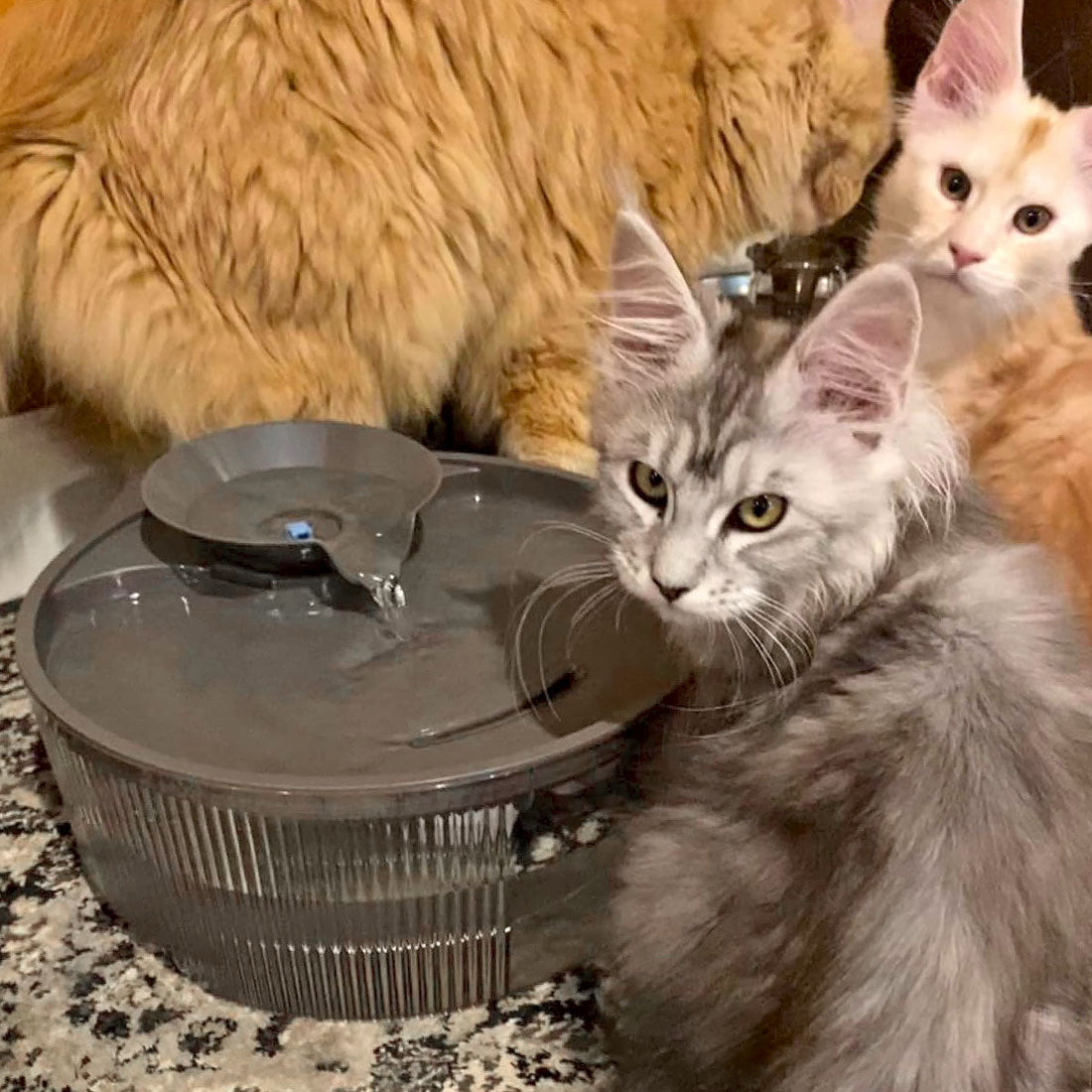
Subtle Signs of Pet Dehydration Every Pet Parent Should Watch For
Most pet parents know to watch for obvious signs of illness, but dehydration can sneak up quietly. A few missed sips of water may not seem like a big deal, yet hydration is critical for digestion, temperature regulation, and healthy organ function. Cats and dogs, especially, can be surprisingly prone to under-drinking. Learning to recognize the subtle signs of dehydration can help you protect your pet’s health before it becomes serious.
Why Hydration Is So Critical for Pets
Water supports nearly every process in your pet’s body. It helps flush toxins through the kidneys, cushions joints, regulates body temperature, and aids digestion. Cats in particular often drink less than they should because their wild ancestors evolved to get most of their water from prey. In today’s world, that means many cats simply don’t drink enough from bowls, especially if the water isn’t appealing.
Early Signs of Dehydration You Might Overlook
- Dry Nose & Gums: A healthy cat or dog should have moist gums. If their nose feels dry and their gums look sticky or tacky, it may be an early dehydration warning.
- Skin Elasticity Test: Gently pinch the skin between your pet’s shoulders. In a well-hydrated pet, it should snap back immediately. If it stays “tented” for a moment, that’s a red flag.
- Sunken or Dull Eyes: Dehydrated pets may lose the bright, alert look in their eyes. Sunken or dry-looking eyes are an urgent sign.
- Lethargy & Reduced Appetite: A pet that’s usually playful but suddenly sluggish, or uninterested in food, may simply need more water.
- Changes in Urination: Less frequent litter box visits, or darker and stronger-smelling urine, often point to dehydration.
When Dehydration Becomes Dangerous
Mild dehydration can often be corrected at home by encouraging your pet to drink, but advanced dehydration is a medical emergency. Seek veterinary help right away if you notice vomiting, diarrhea, rapid breathing, collapse, or refusal to drink water. Heat exposure, illness, and kidney issues can all push a pet into dangerous dehydration quickly.
How to Encourage Your Pet to Drink More
- Keep water bowls fresh, refilling daily.
- Place multiple water stations around the home, especially in multi-pet households.
- Offer wet food or add a splash of water to meals.
- Provide moving water: cats and dogs are instinctively drawn to flowing water because it feels fresher than stagnant bowls.
The Smarter Way to Support Pet Hydration
One of the simplest upgrades you can make is switching from a plastic bowl to a stainless steel pet fountain. Plastic can scratch and harbor bacteria, increasing the risk of feline acne and skin irritation. A high-quality stainless steel fountain, like the Neareal 3.2L 304 Stainless Steel Pet Water Fountain, keeps water circulating and naturally more appealing to pets.
Here’s why it makes a difference:
- Hygienic & Acne-Preventive: Bacteria-resistant stainless steel helps prevent black chin and mouth irritation.
- Large 3.2L Capacity: Enough water to keep your cat or dog hydrated for 5–7 days.
- Wireless Pump Design: No cords in the water, making it safer and easier to clean.
- Dishwasher Safe: A sterile drinking surface with minimal effort.
Final Takeaway
Dehydration doesn’t always announce itself loudly — often, it’s the small signs that matter most. By keeping an eye on your pet’s gums, skin, and behavior, and by making water more inviting, you can protect their health every single day. Upgrading to a stainless steel fountain is one of the most effective ways to support hydration and long-term wellness.